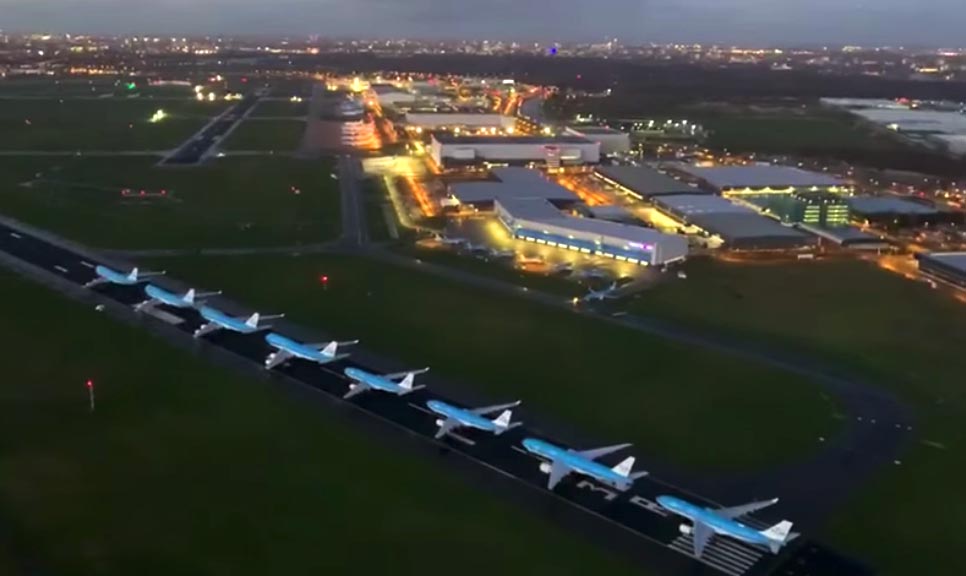The corona crisis is having a relentless impact worldwide, forcing airlines to keep aircraft on the ground.
As a result, Schiphol is packed. Not with passengers, unfortunately, but with the many aircraft parked on the ramp and even on a runway. Choreographing this sad and unique sight is quite a parking-puzzle.
The vast majority of KLM’s aircraft have therefore been grounded and parked for the coming period: all the A330s and Boeing 777-200s, as well as almost all remaining Boeing 747s at Schiphol.
The destinations that KLM continues to serve under this restricted timetable are being operated using Boeing 777-300s, with repatriation flights sometimes being operated using the Boeing 777-200, 787-9 and 787-10 fleet, the remaining Embraer 190s and Boeing 737s.
Some phased out Boeing 747s are also parked. They will be flown to their final destination at a later date.
This brings a Parking Puzzle, because not every position or stand is suitable for every aircraft type. It’s quite a challenge to park all the aircraft in their proper place. Multiple parties are involved in this operation. The size of an aircraft is a key factor, of course.
You need to prevent aircraft blocking each off, for instance, if you need to tow them away for maintenance. Consequently, one of the parking criteria is that there should be enough space between aircraft, so that they can be easily moved for inspection. However, all aircraft types need to be grouped together as closely as possible, to ensure that parking and maintenance can be carried out as efficiently as possible.
KLM therefore has a so-called “active parking programme”, which means our grounded aircraft are properly protected against whatever the Dutch climate throws at them. Regular inspections are an integral part of this Active Storage Programme (ASP), which sees KLM closely cooperating with Schiphol to ensure maximum efficiency in terms of available space and time. It deserves mentioning that Schiphol is not charging parking fees.
To endure wind speeds up to force 8 on the Beaufort scale, the aircraft must be pumped full of fuel, as ballast.
Whenever an aircraft is parked, the cabin is cleaned, all the inlets are sealed off, hatches and doors are closed, and the aircraft battery is disconnected. Vulnerable components are cleaned and lubricated to prevent corrosion during parking.
But there’s more to be done, because the parked aircraft have to undergo periodical inspections, which vary per aircraft types. The engines have to be started occasionally, the cabin has to be aired and dried, and hydraulic and steering systems have to be tested. Some aircraft types also have to be moved slightly to prevent deformation of the tires.


